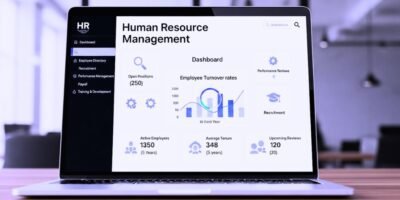In today’s data-centric business landscape, organizations face the challenge of managing and extracting valuable insights from vast data. SAS Business Intelligence (BI) emerges as a powerful solution that empowers businesses to harness the potential of their data and make informed, data-driven decisions. This article delves into the world of SAS BI, exploring its key features, benefits, and how it revolutionizes how organizations analyze data to gain a competitive edge.
Understanding SAS BI
SAS BI is a comprehensive suite of tools and technologies designed to transform raw data into actionable insights. SAS, short for “Statistical Analysis System,” is a leading analytics and business intelligence software vendor that has been instrumental in shaping the data analytics landscape for decades. The SAS BI platform includes various modules catering to different aspects of data management, visualization, and analytics, providing a unified and seamless user experience.
Key Features of SAS BI
Regarding SAS BI, several key features make it stand out from other business intelligence solutions. One of the most important features is its ability to quickly handle large amounts of data.
Data Integration
One of the fundamental building blocks of SAS BI is its robust data integration capabilities. Organizations deal with data from various sources, including internal databases, external data feeds, cloud-based platforms, and spreadsheets. SAS BI’s data integration features allow for seamless extraction, transformation, and loading (ETL) of data from disparate sources into a centralized data repository. This process ensures that data is cleaned, standardized, and ready for analysis, eliminating data silos and enabling a holistic view of the organization’s information.
Data Visualization
Data visualization is a crucial aspect of any business intelligence platform, and SAS BI excels in this domain. The platform offers various interactive and dynamic visualizations, including charts, graphs, heat maps, and dashboards. Users can effortlessly explore and interact with visual representations of data, gaining a deeper understanding of complex information and identifying trends and patterns. With SAS BI’s visualization capabilities, users can create insightful reports and dashboards that convey information in an easily digestible format, fostering better data-driven decision-making across the organization.
Reporting and Dashboards
SAS BI enables users to create customizable reports and interactive dashboards that provide real-time insights into key performance indicators (KPIs) and business metrics. These reports and dashboards can be tailored to specific roles and departments within the organization, ensuring stakeholders can access the most relevant information. The interactive nature of these reports allows users to drill down into the data, perform what-if analyses, and explore various scenarios, empowering them to derive meaningful insights and make informed decisions.
Advanced Analytics
SAS BI is not limited to descriptive analytics, where data is summarized and analyzed to understand what happened. It also offers advanced analytics capabilities, such as predictive modeling and data mining. Organizations can leverage these features to identify patterns, forecast trends, and make data-backed predictions. For example, SAS BI can be used for customer segmentation, churn prediction, fraud detection, and demand forecasting. The integration of advanced analytics within the BI platform enables users to move beyond historical analysis and leverage data as a strategic asset for driving future success.
Self-Service BI
Empowering business users with self-service BI capabilities is a cornerstone of SAS BI. The platform’s intuitive interface allows non-technical users to perform ad-hoc data analysis, create reports, and design visualizations without relying on IT or data analysts. This democratization of data ensures that insights are accessible to all stakeholders when needed. Organizations can foster a data-driven culture by reducing dependency on specialized IT resources, leading to faster decision-making and increased agility.
Benefits of SAS BI
The benefits of SAS BI are numerous and significant. With its ability to handle large amounts of data, advanced analytics capabilities, and robust reporting and visualization tools, it provides businesses with the insights they need to make better decisions and stay ahead of the competition.
Informed Decision Making
SAS BI equips decision-makers with timely and accurate information, enabling them to make informed choices that align with organizational goals. The platform’s data visualization and reporting capabilities translate complex data into easy-to-understand visuals, facilitating quicker and more confident decision-making processes. With access to up-to-date data and real-time insights, decision-makers can swiftly respond to challenges and opportunities, gaining a competitive edge in the market.
Enhanced Efficiency
With SAS BI’s data integration and automation features, organizations can streamline their data management processes and eliminate manual data manipulation tasks. This improved efficiency allows teams to focus more on analyzing insights and less on data preparation, leading to better productivity. Additionally, the self-service BI capabilities empower business users to access the data they need directly, reducing bottlenecks and enabling faster decision-making at all levels of the organization.
Agility and Flexibility
SAS BI’s self-service BI capabilities enable business users to explore data on their terms and ask ad-hoc questions as needed. This agility allows organizations to respond quickly to changing market conditions and emerging opportunities. It promotes a data-driven culture that fosters innovation and quick decision-making by providing business users with the tools they need to be more self-sufficient in their data analysis.
Compliance and Governance
Data security, privacy, and regulatory compliance are critical concerns for organizations handling sensitive data. It emphasizes data governance and compliance, ensuring that data security measures are in place and regulatory requirements are met. With robust data governance practices, organizations can trust the accuracy and reliability of their data, instilling confidence in decision-making processes and adhering to industry standards and regulations.
Competitive Advantage
By leveraging SAS BI’s advanced analytics capabilities, organizations can gain a competitive advantage by identifying market trends, customer preferences, and business opportunities that may have remained hidden without data-driven insights. Predicting future trends and anticipating customer needs enables organizations to proactively tailor their strategies and offerings, gaining a competitive edge in their respective markets.
Conclusion
SAS BI has emerged as a cornerstone for organizations seeking to harness the power of data to drive growth and innovation. With its comprehensive data integration, visualization, reporting, and advanced analytics tools, it empowers business users to explore data, gain insights, and confidently make data-driven decisions.
By democratizing data and promoting self-service BI, SAS BI ensures that insights are available to stakeholders across the organization, fostering a culture of data-driven decision-making. As the data landscape evolves, SAS BI remains at the forefront of empowering organizations to stay competitive in an increasingly data-driven world. Embracing SAS BI enables organizations to leverage data as a strategic asset, unlocking its full potential to drive business success and achieve their objectives in a rapidly changing business landscape.













